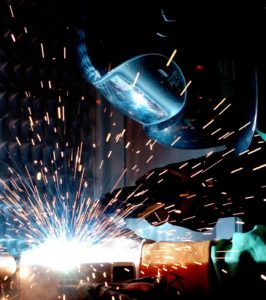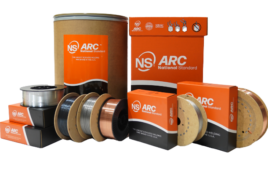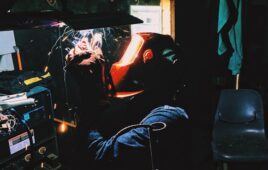Written by Miles Budimir
Senior Editor, WTWH Media
 Among the different varieties of welding techniques — which include gas (such as the oxyacetylene method), laser, ultrasonic, and others — the most common type today is electric arc welding. This process uses a high-electric current (usually in the 10 to 100s of amps range) that forms an arc between the welding probe and the metal.
Among the different varieties of welding techniques — which include gas (such as the oxyacetylene method), laser, ultrasonic, and others — the most common type today is electric arc welding. This process uses a high-electric current (usually in the 10 to 100s of amps range) that forms an arc between the welding probe and the metal.
The electric arc produced heats up and melts the materials to be joined together. As with other welding techniques, there’s also a filler metal that helps in forming the bond.
Arc welding is also known as shielded metal arc welding (SMAW), manual metal arc welding (MMAW), or stick welding. Tungsten inert gas (TIG) is also referred to as gas tungsten arc welding (GTAW). Both TIG and arc welding are electric arc welding techniques that use an inert gas, typically argon or helium, around the weld joint to prevent oxidation.
The main difference between the two relates to the electrode. TIG welding uses a tungsten electrode that produces the electric arc between the torch and the metal workpiece. Because tungsten has a high melting point above 6,000° F, the tungsten electrode is not consumed during welding. The result is that TIG welding tends to be highly controllable and produces a stable electric arc and a clean, precise, and strong weld.
In contrast, in arc or stick welding, the electrode is consumable. Unlike in TIG welding, the electrode acts as the filler metal rod and melts to form part of the weld joint itself. The electrode or rod also contains within it a flux, which produces a barrier to protect from atmospheric contamination.
Also, typically the flux in stick welding electrode contains an inert gas within it, eliminating the need for an external gas supply. On the downside, stick welding can produce spatter and in general
produces a rougher weld than TIG.





Simple informative and to the point thanks learnt something today 👍
Explained to the point .
concise, clear explanation, thank you.
Nicely explained
Very clear, thank you.